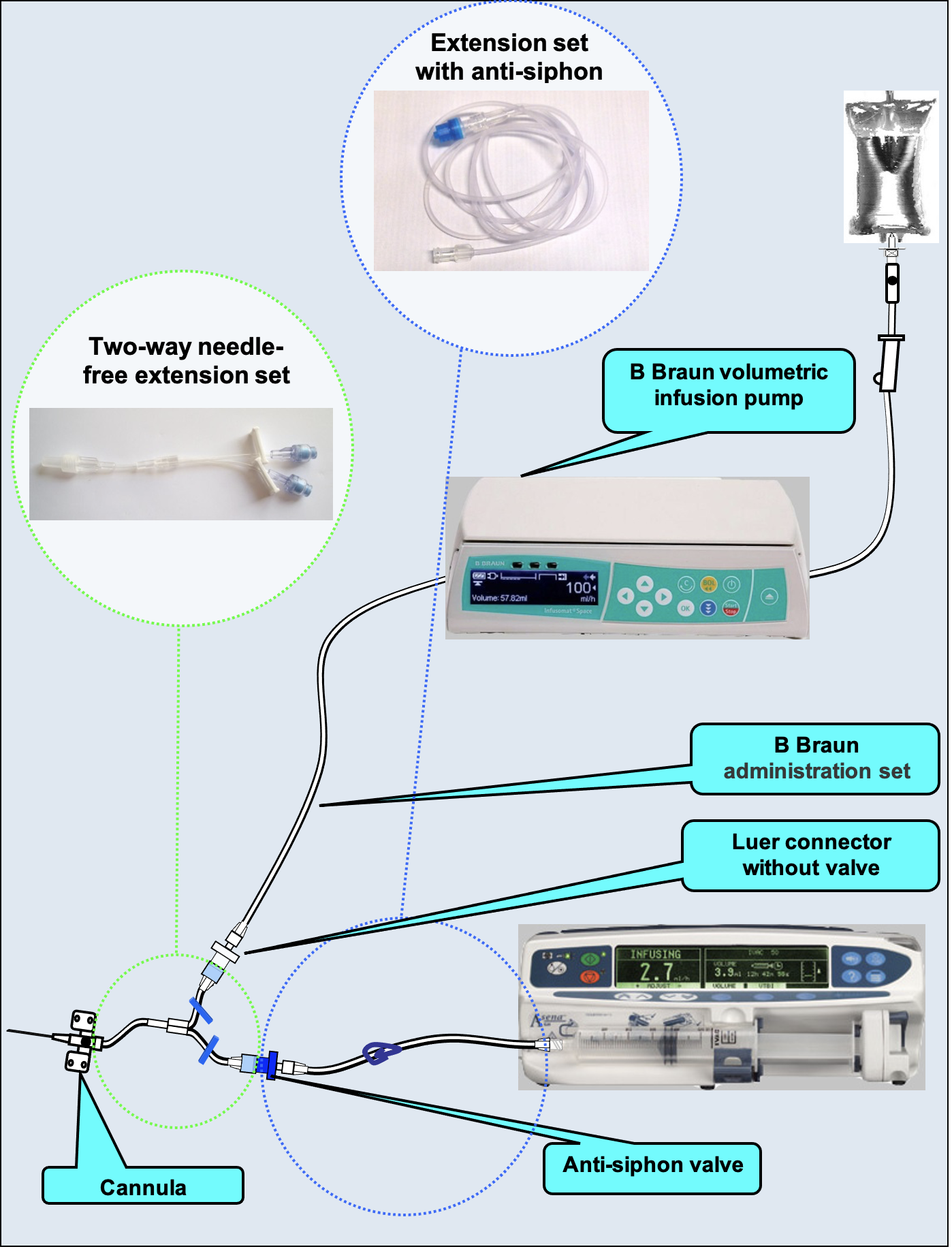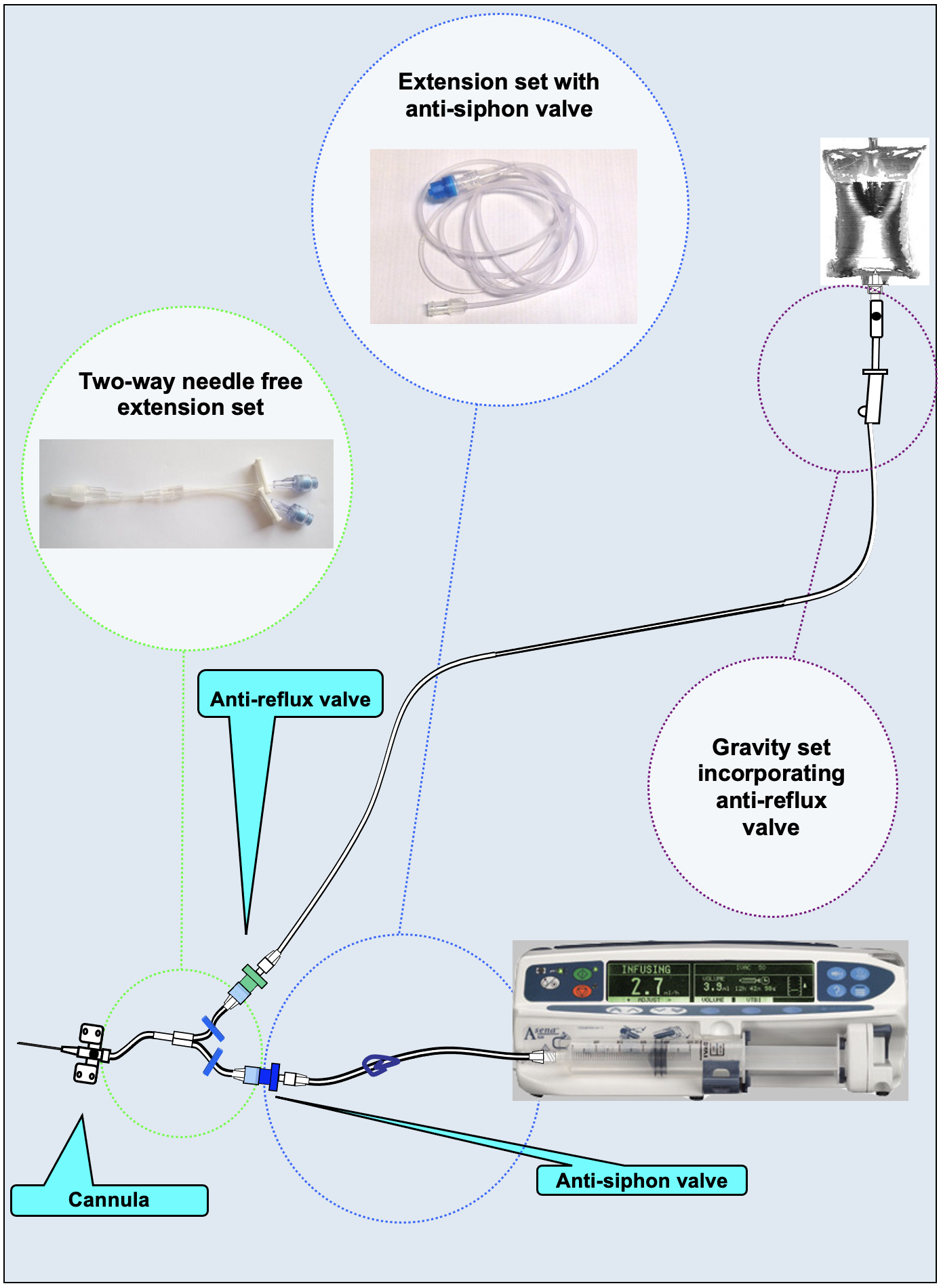DO NOT USE - ALL INFORMATION LIKELY INCORRECT IF NOT ACTIVELY DANGEROUS
Please use current guidelines available on the UHNM intranet for patient treatment
Please use current guidelines available on the UHNM intranet for patient treatment
- For insulin and fluids, use IV insulin and IV fluid via one cannula guideline
DEFINITIONS
Anti-reflux valve
- One-way valve that prevents 'reverse flow'
Anti-siphon check valve
- One-way valve that:
- prevents 'reverse flow'
- with higher opening pressures to prevent inadvertent fluid flow caused by siphoning when tying into a higher flowing line
PROCEDURE
Drug infusion
- Administer by a syringe pump via an infusion set with an anti-siphon valve
- to prevent inadvertent flow to patient from an unclamped or damaged syringe
IV fluids
Ideal-use volumetric pump
- Run IV maintenance fluid via a volumetric pump to a Luer connector without a valve. See figure 1
Gravity set with anti-reflux valve
Check safe to use
- Use only for drug infusions where inadvertent administration of the drug infusion or the fluid infusion at an unintended rate would not be clinically unsafe
- e.g. not for insulin, vasopressors, inotropic agents
- use only if a volumetric pump is not available, or the IV fluid line is removed from the pump
- Fit an anti-reflux valve to prevent reverse flow of drug into bag. See figure 2
- gravity sets incorporating an anti-reflux valve are available
Assembly
- Connect drug infusion syringe to a line with an anti-siphon valve
- run infusion through line
- place syringe into syringe driver
- Connect IV fluid to an administration set running through a volumetric pump to a Luer lock (Figure 1) OR to an administration set to an anti-reflux valve (Figure 2)
- run IV fluid through administration set
- Connect each into one of the double ends of a two-way needle-free extension set
- run IV fluid through extension set
- Connect the single end of the two-way needle-free extension set into the cannula
Last reviewed: 2023-11-15

